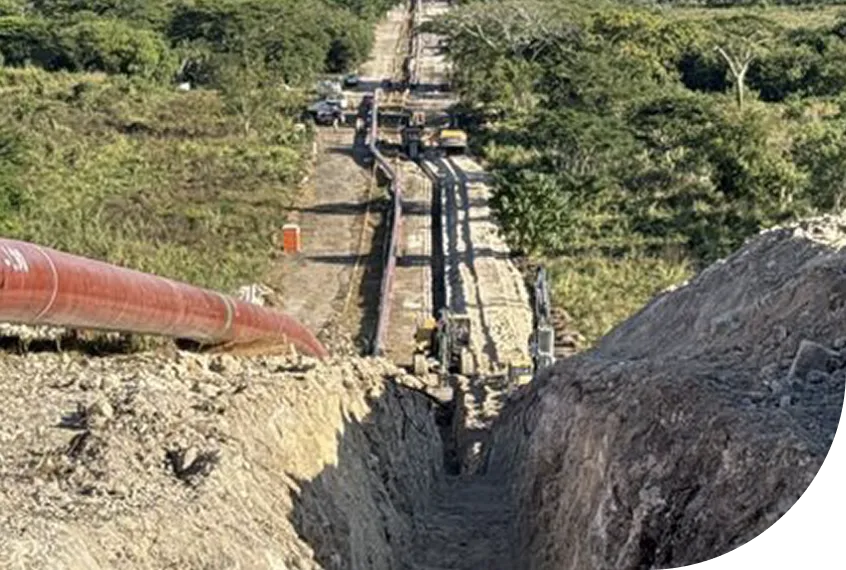As an Investor
Responsible Investments
As a responsible investor, MetLife maintains a long-term, value-driven perspective through MetLife’s GA investment portfolio. MetLife’s responsible investments seek to achieve a market financial return while considering social and/or environmental benefits that help create healthier communities and a more sustainable environment to build a more confident future for stakeholders.
These investments focus on the core areas of infrastructure investments, green investments, municipal bonds, affordable housing and impact investments.1
Examples in this section represent various investments made in 2024 through MetLife’s GA investment portfolio.
Infrastructure Investments
Supported by MIM’s strengths as the largest infrastructure debt investments manager globally by AUM,4 MetLife invests in infrastructure projects that create jobs, support resilient communities and provide economic benefits. These projects could include building or upgrading airports, ports, roads, pipelines, transmission lines and power generation. MetLife's GA investment portfolio includes $23.5 billion of responsible infrastructure AUM.2
MetLife’s infrastructure investments work to address global infrastructure needs. MetLife committed $50 million to finance the construction of the Mayakan natural gas pipeline, which aims to bring cheaper natural gas from the U.S. to the Yucatán peninsula in Mexico, an expansion that could help to reactivate economic growth in the region.
MetLife has also invested $101 million in the Champlain Hudson Power Express® (CHPE) project, a 339-mile underground and underwater transmission line that will bring clean, hydropower electricity from Quebec, Canada directly to New York City’s local power grid. Once operational, CHPE is expected to help reduce emissions and provide New Yorkers with a low-cost, renewable energy supply. The project is expected to be completed by spring 2026.
Tolearn moreabout
Green Investments
MetLife invests in companies and projects that are focused on the conservation of natural resources, the production and discovery of alternative energy sources, the implementation of clean air and water projects and other environmentally conscious business practices.
MetLife also invests in the Commercial Property Assessed Clean Energy sector, which finances property improvements such as solar panels, water systems, and heating, ventilation and air-conditioning system upgrades to improve energy and water efficiency or resiliency to climate-related damage.
In Austin, Texas, MetLife provided debt financing for the Austin Proper Hotel, a Leadership in Energy and Environmental Design (LEED) Gold-certified building developed on a former brownfield site, built with locally sourced travertine, energy-efficient LED lighting and a reclaimed irrigation system. The hotel has also earned high walk, transit and bike scores, underscoring its accessibility within the community.
Additionally, MetLife was the lead investor in the Atal Solutions’ Blue Astra Maritime note issuance, which financed the environmentally friendly retrofitting of four second-hand dry bulk vessels. In recognition of their significant sustainability efforts, IJGlobal awarded Atal an ESG Energy Transition Award in 2024.5
Municipal Bonds
MetLife’s municipal bond investments support infrastructure, education and community services spanning 450 communities in 44 U.S. states and Washington, D.C. The proceeds of these investments can be used to finance or refinance environmental, water and clean energy projects, as well as projects with anticipated positive social outcomes, such as affordable public housing and school building revitalization.
In 2024, MetLife invested $81 million in State Housing Finance Agency bonds issued by the Illinois Housing Development Authority, which has provided more than $27 billion in state, federal and leveraged financing to enable the purchase, development or rehabilitation of more than 327,000 homes and apartments for low- and middle-income households. The spending of the proceeds aligns with the International Capital Market Association’s Social Bond Principles of affordable housing, access to essential services, and socioeconomic advancement and empowerment.
Affordable Housing Investments
MetLife invests in high-quality housing projects that seek to build financial health and bring benefits to communities. These housing investments involve partnering with nonprofit organizations that provide rental homes at below-market rents to low-income earners, including teachers, nurses, council workers and the elderly and infirm.
MetLife committed £120 million to Local Space, a U.K. charitable housing association whose purpose is to provide safe, high-quality, temporary accommodation to people experiencing homelessness, with residents averaging an occupation tenure of six years. Local Space also seeks to connect residents with health, education and other support services and resources, alongside housing accommodations.
Impact Investments
MetLife has been in the impact investment market since 1984. Since the MetLife Impact Investment program's inception, MetLife has committed approximately $1.1 billion, with an average of $40.6 million annually for the past 10 years. The program's investments are made with the intention to generate positive, measurable social and environmental impact alongside a financial return, such as for building financial health and climate resilience. These impact investments are originated solely for MetLife and MetLife Foundation.
MetLife is an investor in the Blue Revolution Fund (BRF)—an innovative, sustainability-focused aquaculture impact investment fund. BRF seeks to invest in more than a dozen early-stage aquaculture ventures, with the aim to improve ocean health and support coastal communities.
MetLife is also a lender to Community Aggregators Group National Fund IV LLC, a collaboration among four nonprofits whose primary purpose is to increase the supply of affordable single-family homes across the U.S. The fund seeks to improve access to affordable single-family homes for community-based nonprofit organizations and their homebuyer customers.



